Why you can trust Tom's Hardware
SPEC Workstation and Adobe Performance Test Notes
We ran an extra series of tests to reflect performance in workstation-class workloads. Some of these applications make an appearance in our standard test suite, but those test configurations and benchmarks are focused on a typical desktop-class environment. In contrast, these tests are configured to stress the systems with workstation-class workloads.
With the exception of the W-3175X system, we loaded down our test platforms with 64GB of DDR4 memory spread across four modules to accommodate the expanded memory capacity required for several of these workstation-focused tasks. Due to the W-3175X's six channel memory controller and our limited stock of high-capacity DIMMs, we used six 8GB DIMMs for a total capacity of 48GB. All systems were tested at the vendor-specified supported memory data transfer rates for their respective stock configurations, and DDR4-3600 for the overclocked settings.
Puget Systems Benchmarks
Puget Systems is a boutique vendor that caters to professional users with custom-designed systems targeted at specific workloads. The company developed a series of acclaimed benchmarks for Adobe software, which you can find here. We use several of the benchmarks for our first round of workstation testing, followed by SPECworkstation 3 benchmarks.
Adobe After Effects CC Render Node Benchmark
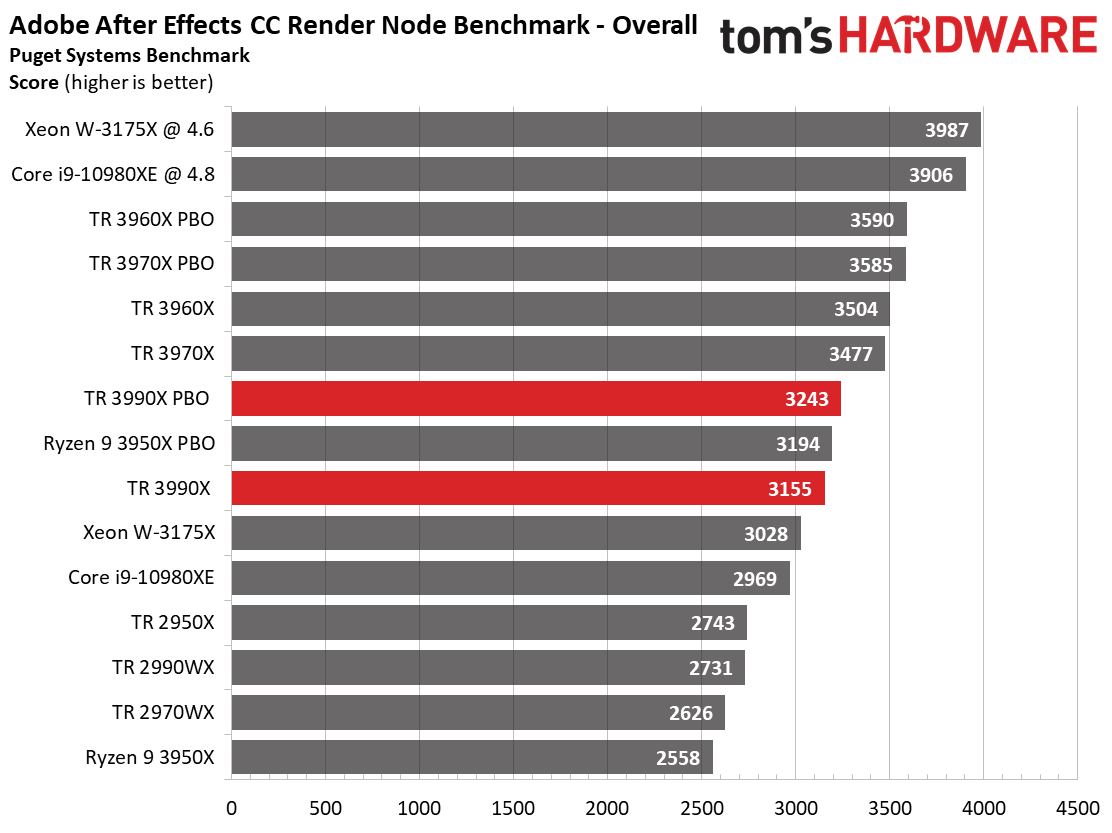
The After Effects render node benchmark leverages the in-built aerender application that splits the render engine across multiple threads to maximize CPU and GPU performance. This test is memory-intensive, so capacity and throughput are important and can be a limiting factor.
We're surprised that the 3990X didn't perform as well in this workload as we expected, especially given that it seems to scale correctly across all cores and threads. However, we did test with the 64GB memory kit recommended by AMD, but the company officially recommends 128GB or 256GB of memory capacity, which benefits some workloads. Given that this test leans heavily on the memory subsystem, we suspect that it will respond better to more memory capacity.
Unfortunately, we only have a 64GB kit on hand, and we encountered issues getting our 128GB ECC memory kits up and running with the current BIOS revision. We'll circle back on this test if we can work out the kinks.
Adobe Premier Pro CC Benchmark
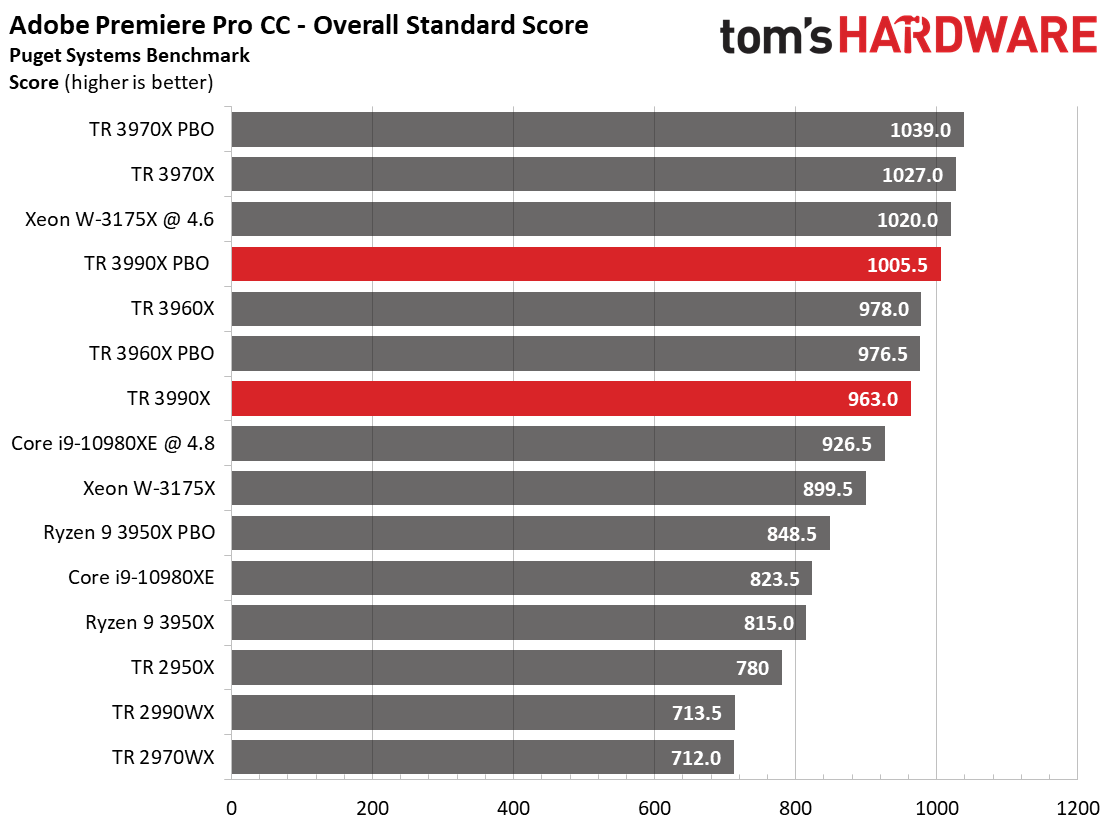
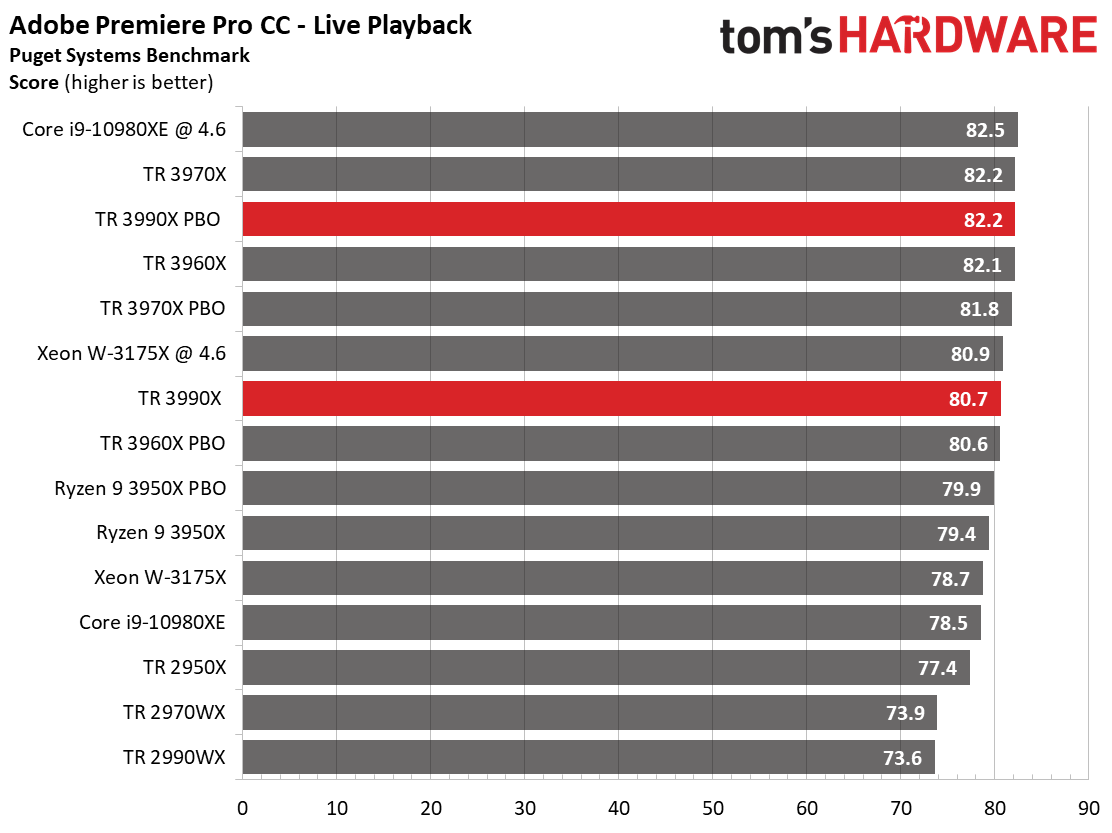
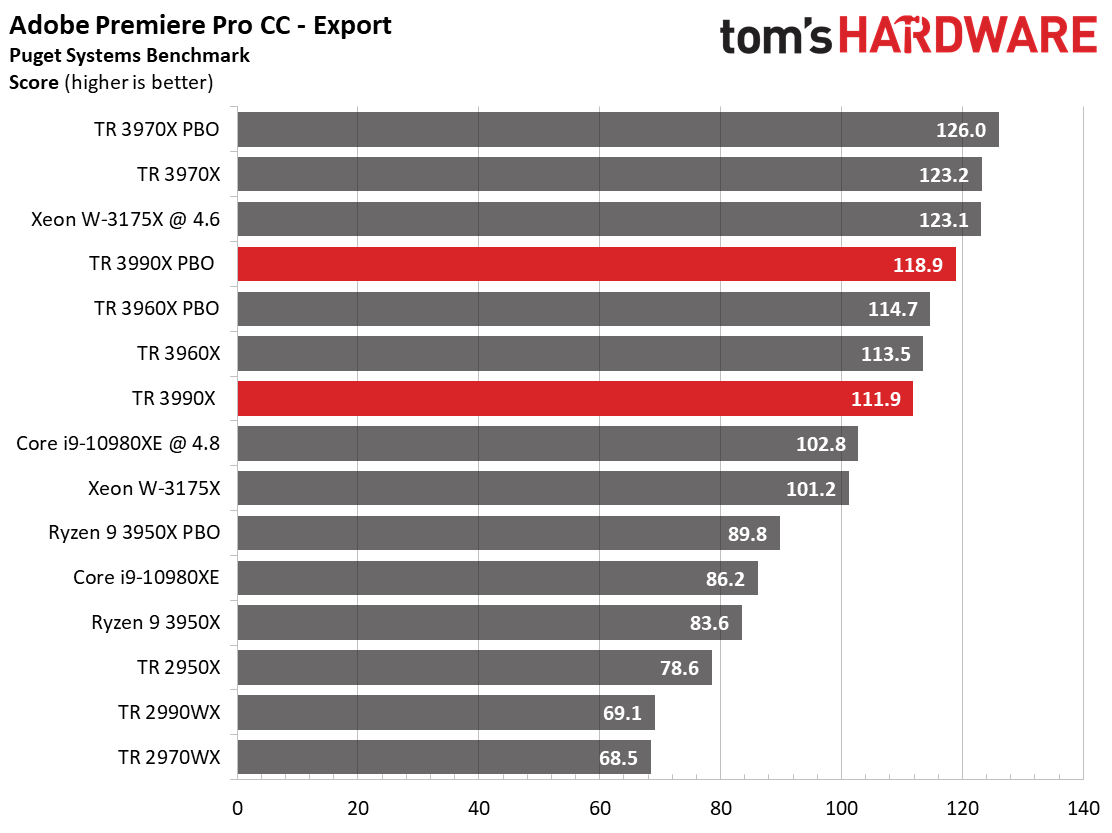
This benchmark measures live playback and export performance with several codecs at 4K and 8K resolutions. It also incorporates 'Heavy GPU' and 'Heavy CPU' effects that stress the system beyond a typical workload. Storage throughput also heavily impacts the score.
Get Tom's Hardware's best news and in-depth reviews, straight to your inbox.
The Threadripper 3990X trails the overclocked Xeon, along with the 32-core 3970X, in this round of tests. This test works through an entire video editing workflow, so some portions are heavily threaded, while other portions aren't nearly as intense. The combination of the two types of workloads throughout the test likely impact the 3990X's score, as it is most impressive during sustained heavily-threaded workloads.
Adobe Photoshop CC Benchmark
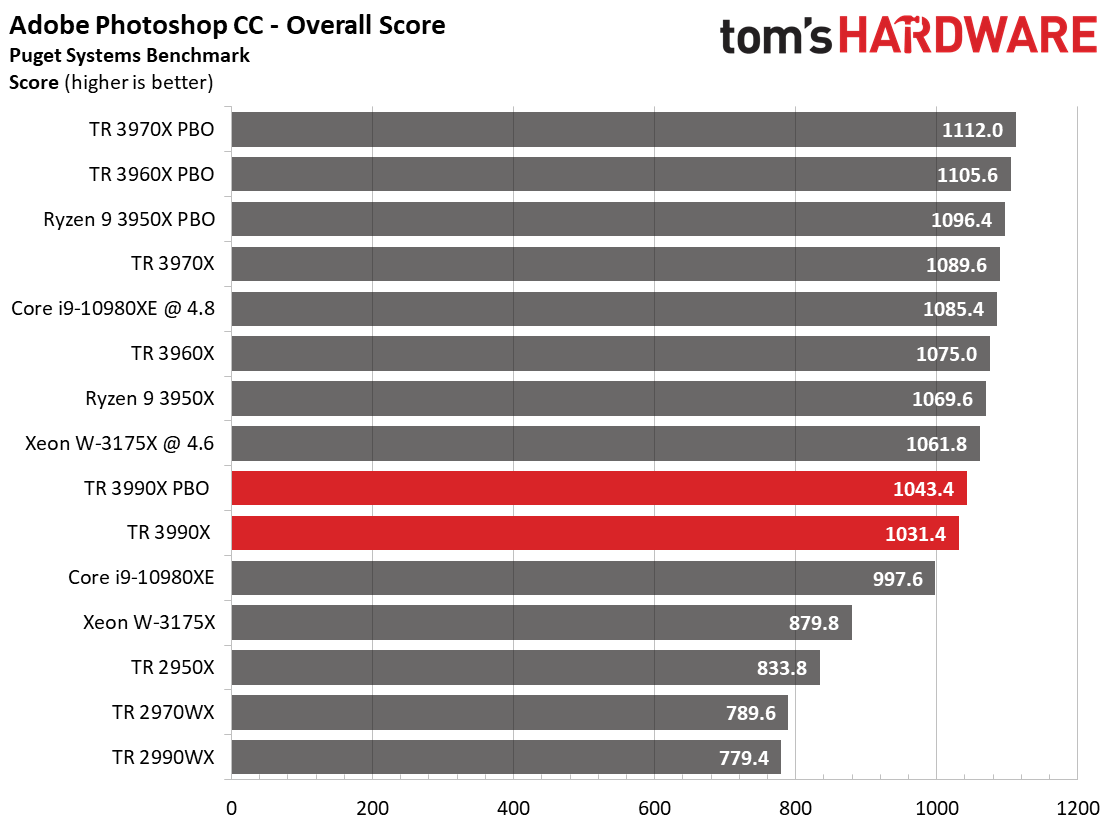
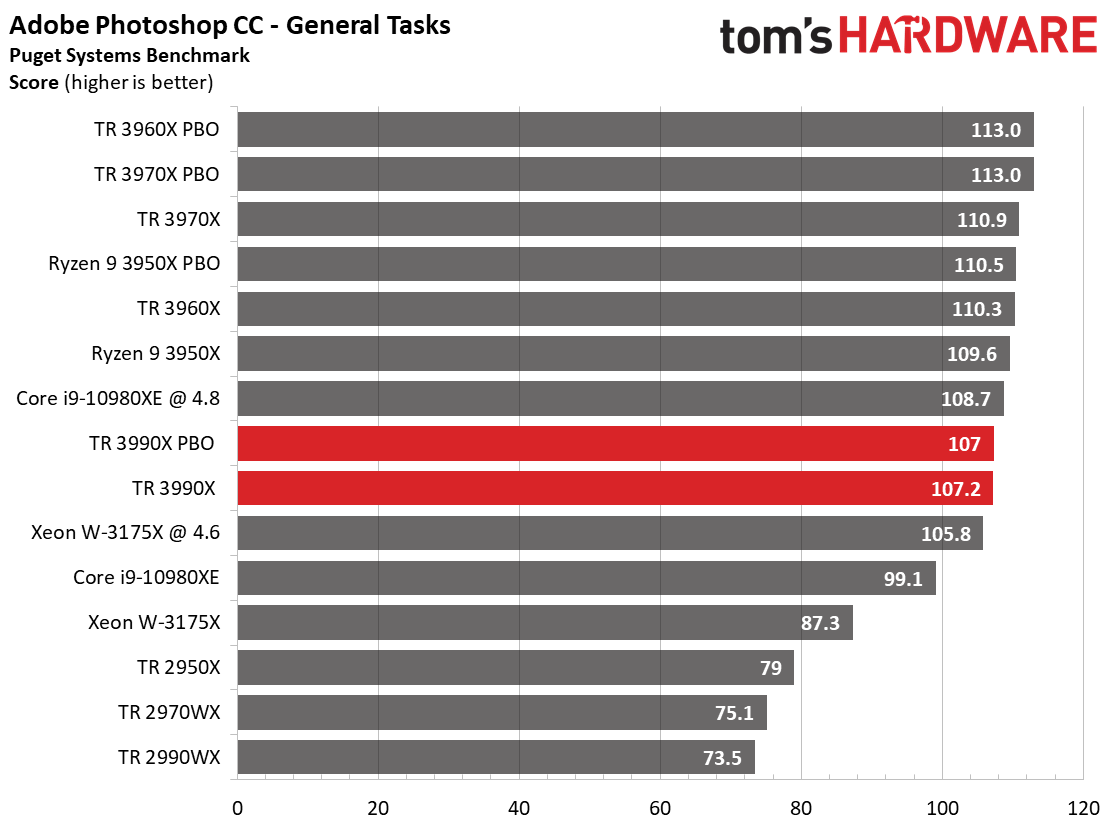

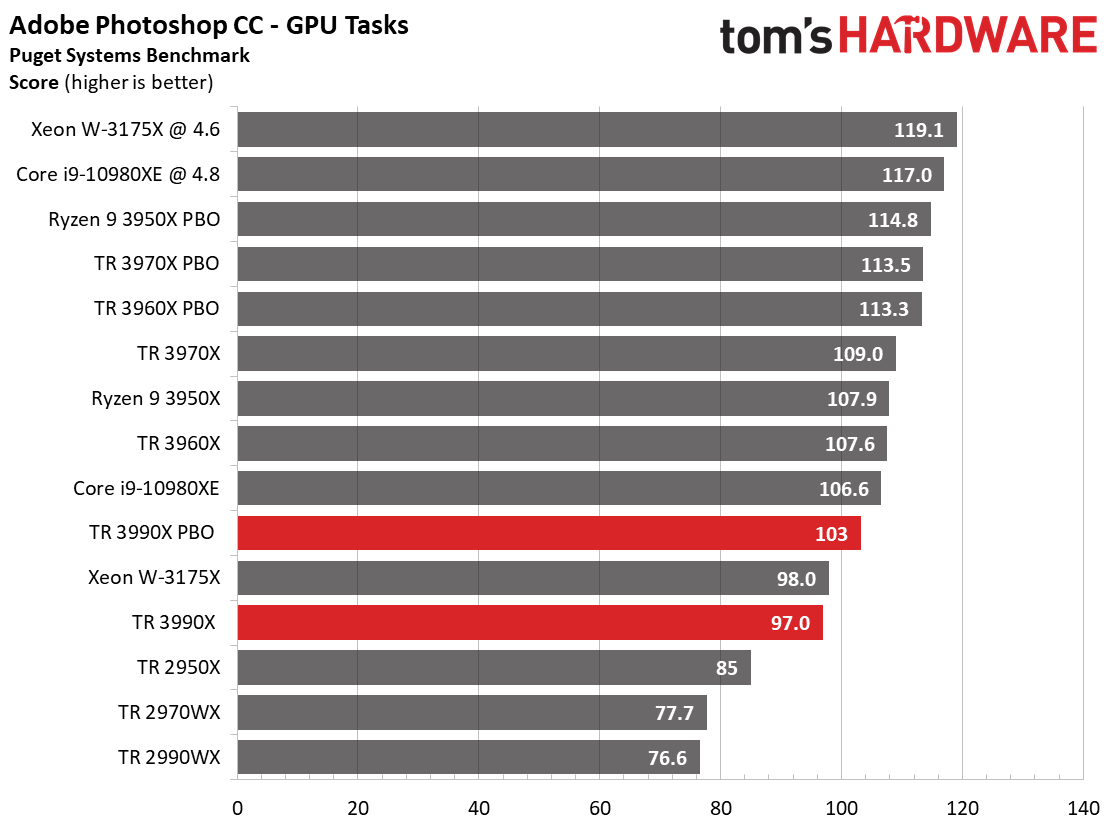
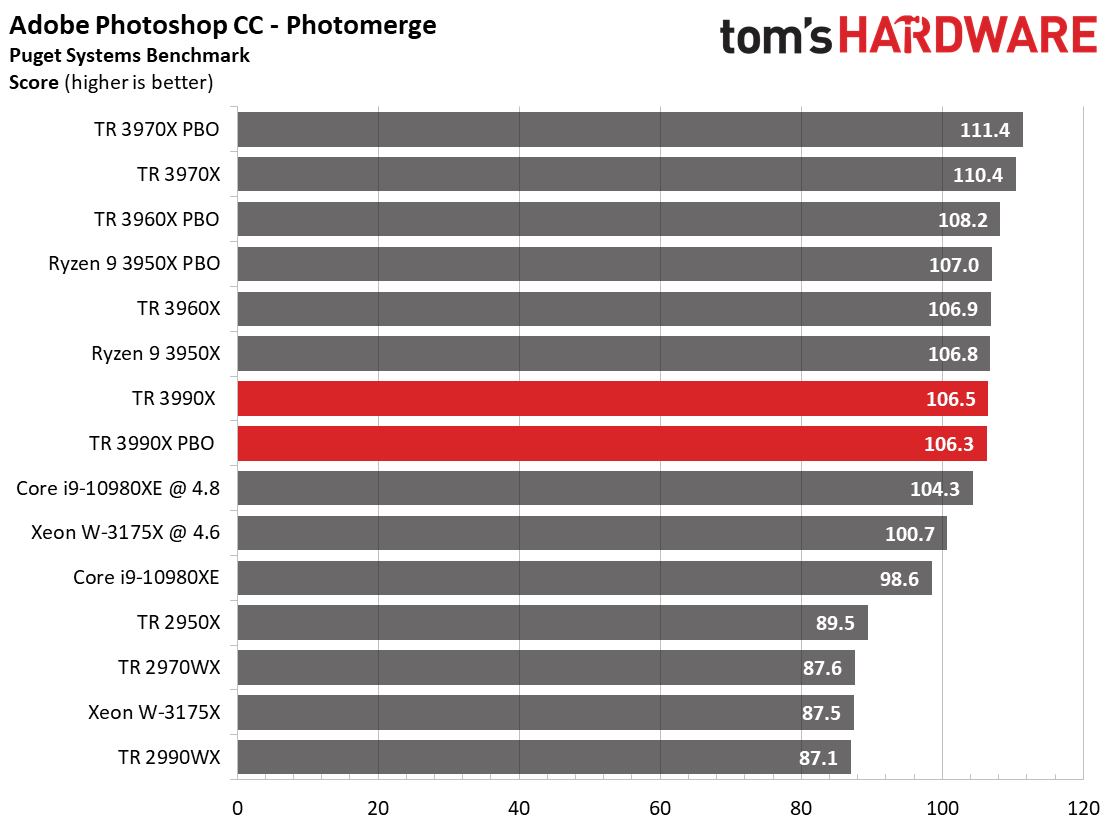
The Photoshop benchmark measures performance in a diverse range of tasks, measuring the amount of time taken to complete general tasks, create panoramas (photomerge results), and apply filters.
Much like the Premiere Pro benchmark, this suite encompasses a wide range of tasks that doesn't include many extended heavily-threaded workloads.
Based on the results of this test, it's clear why AMD specifically recommends the 3990X for rendering workloads.
SPECworkstation 3 Benchmarks
The SPECworkstation 3 benchmark suite is designed to measure workstation performance in professional applications. The full suite consists of more than 30 applications split among seven categories, but we've winnowed down the list to tests that largely focus specifically on CPU performance for our standard benchmarking suite. We haven't submitted these benchmarks to the SPEC organization, so these are not official benchmarks.
Media and Entertainment
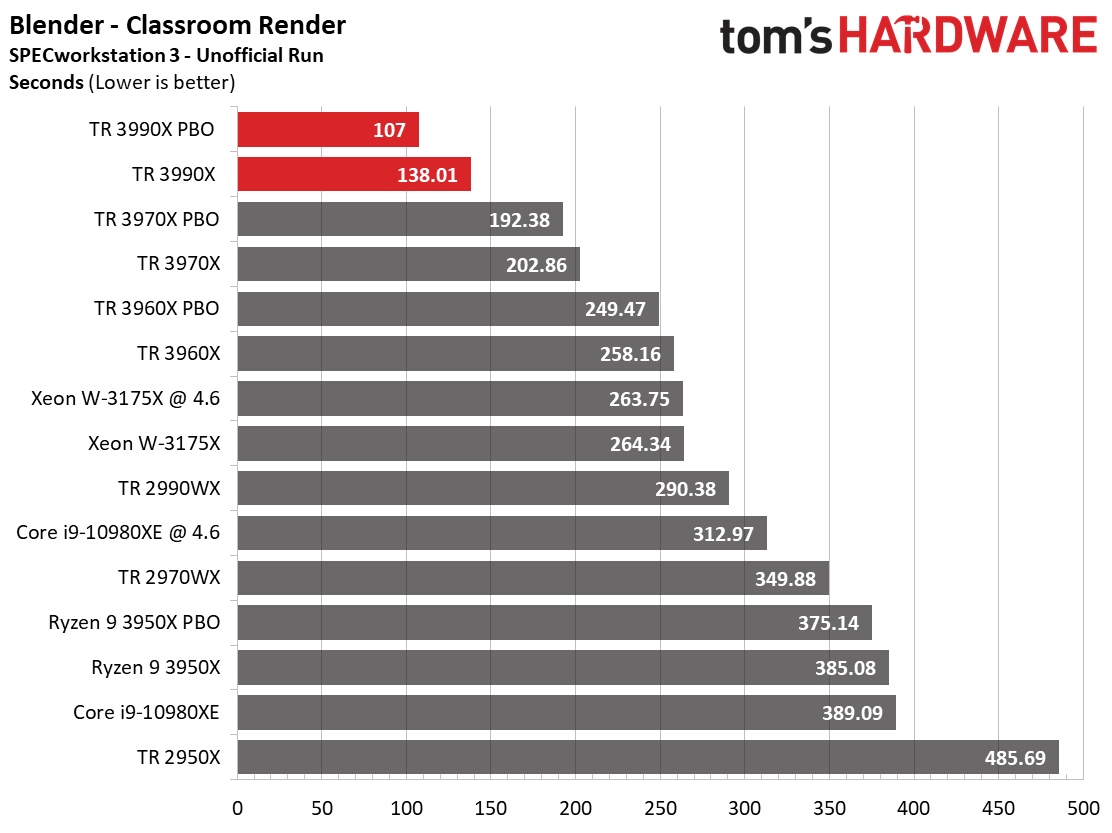
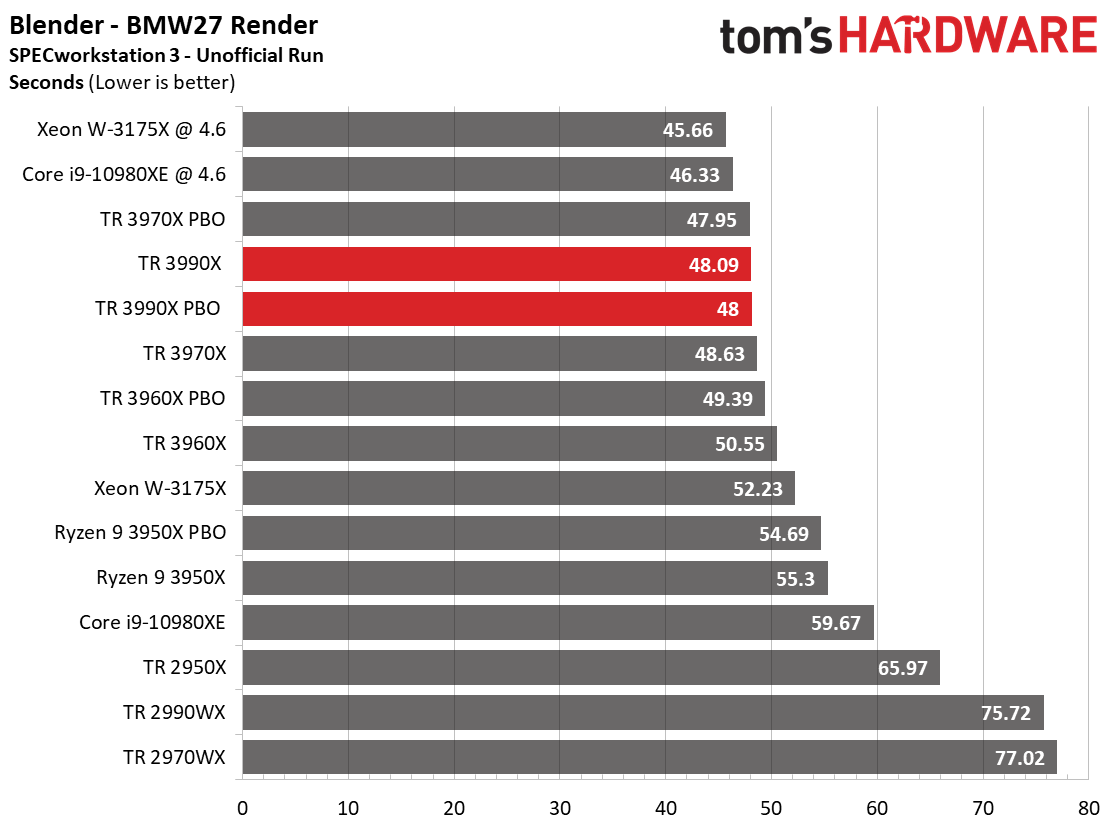
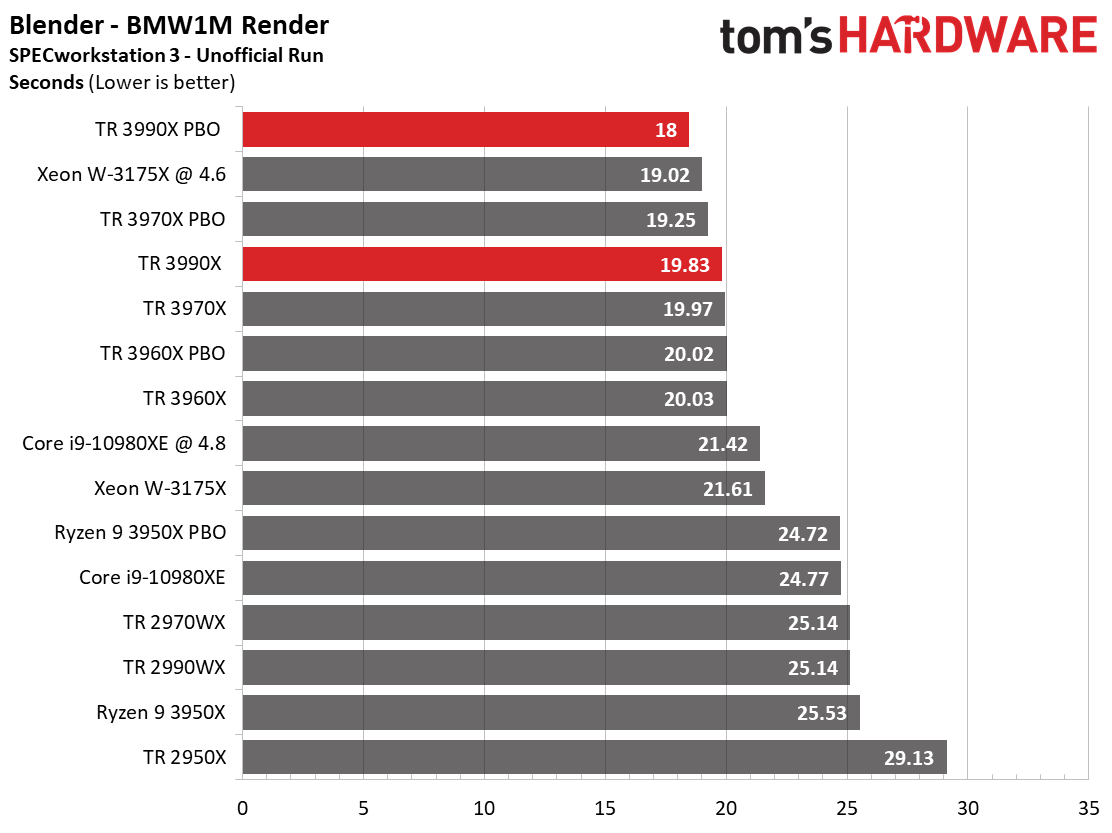
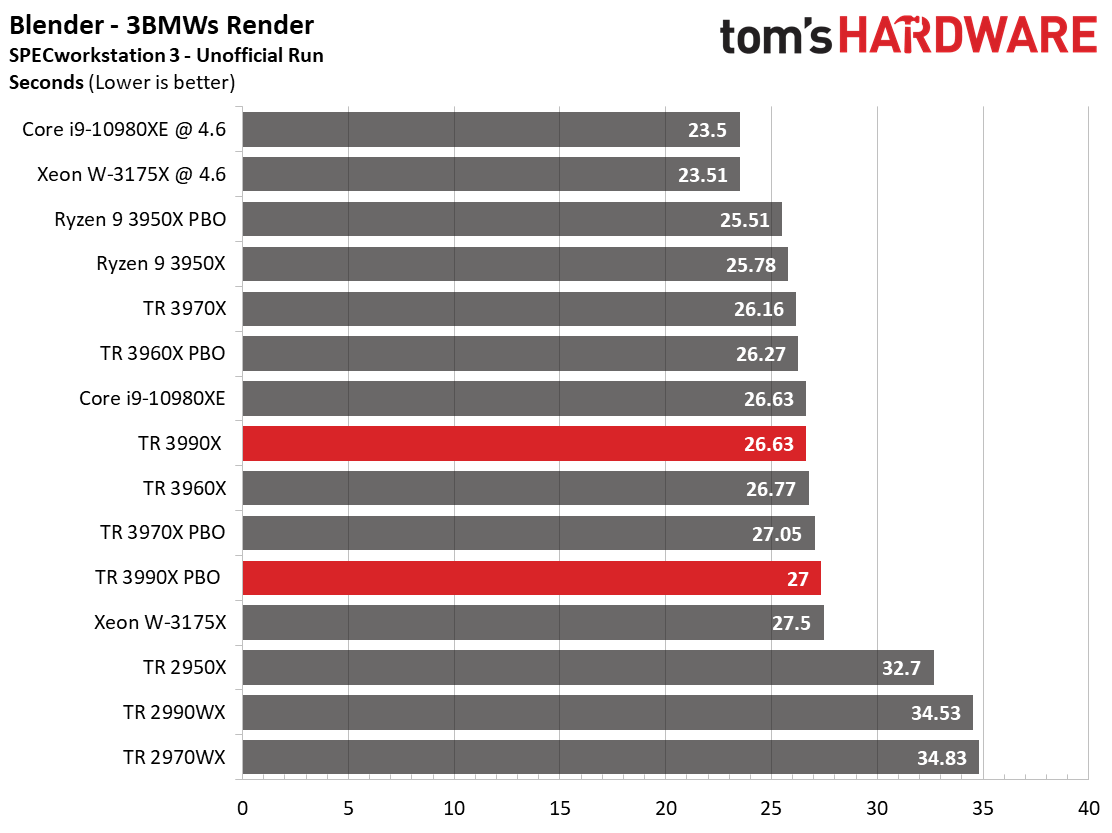
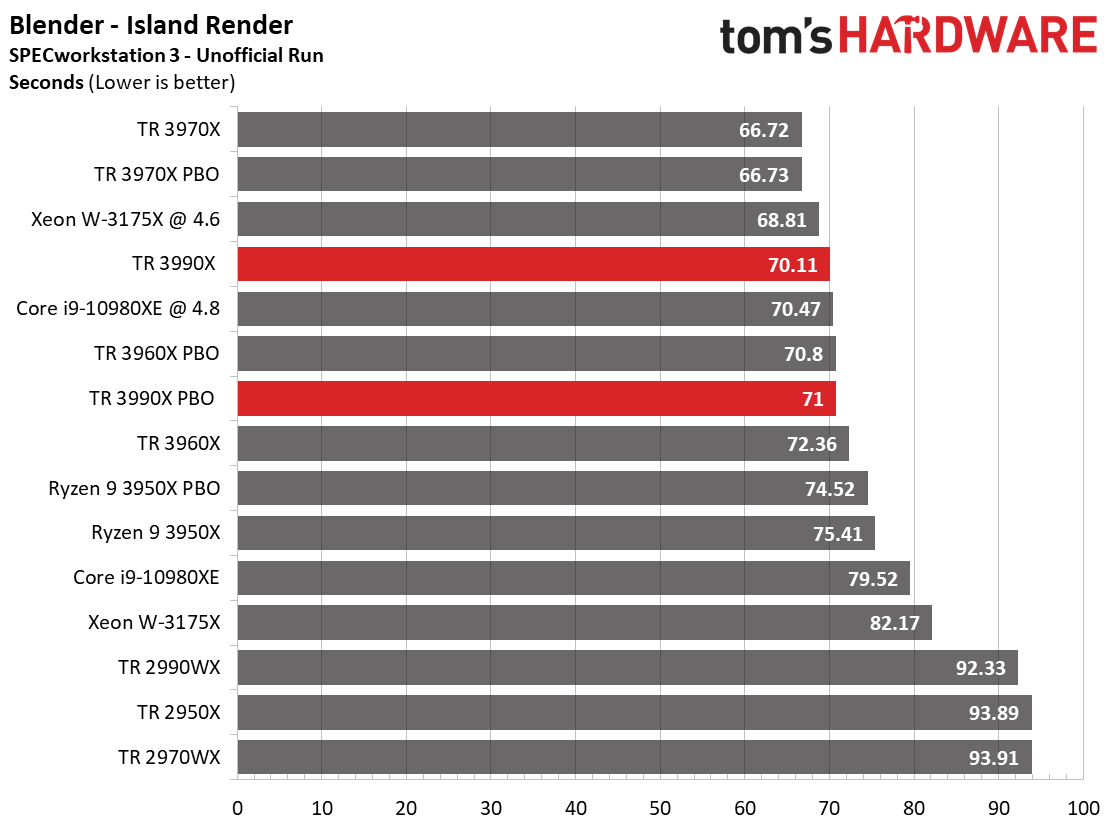
We run the new Blender Benchmark beta in our regular suite of tests, but different types of render jobs can stress processors in unique ways. Here we can see a breakout of several industry-standard benchmark renders that largely favor the Zen 2 architecture. You'll notice that the Threadripper 3990X tends to be more competitive in the longer-duration render workloads, which falls right in line with the company's guidance that workload intensity has a big impact on performance. We verified that this portion of the benchmark suite runs across both processor groups.
Rodinia LifeSciences
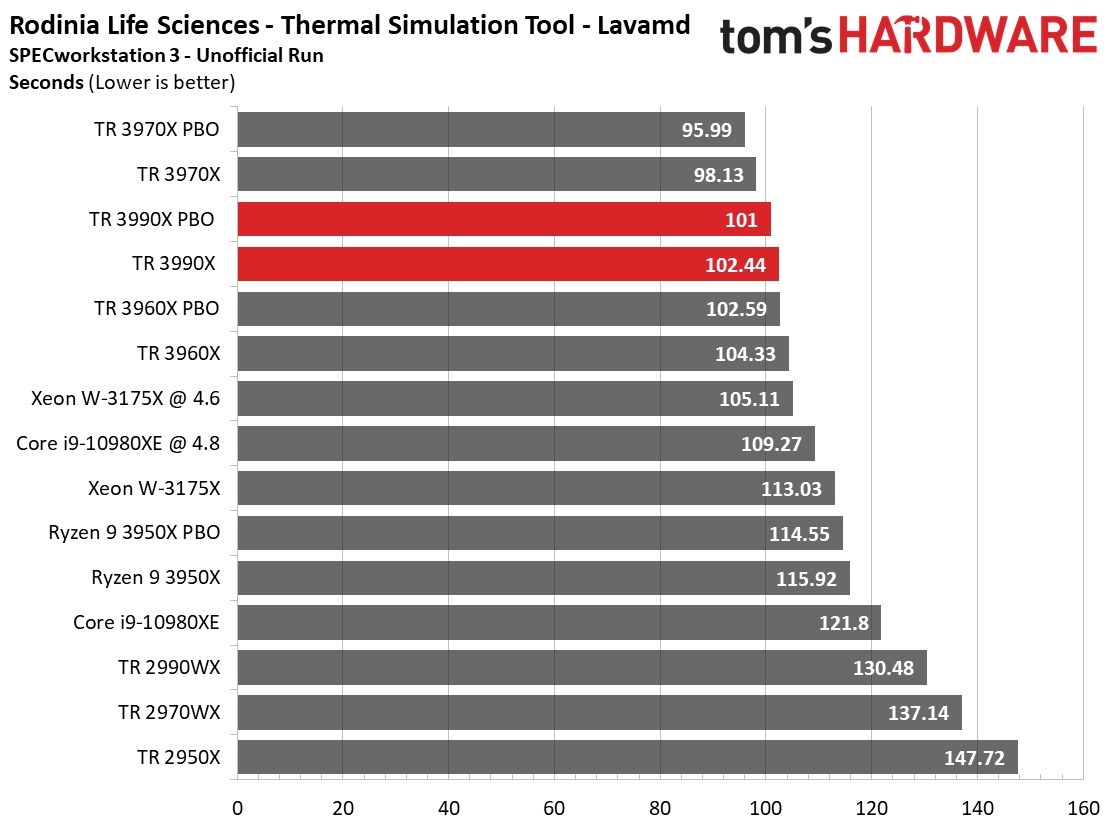
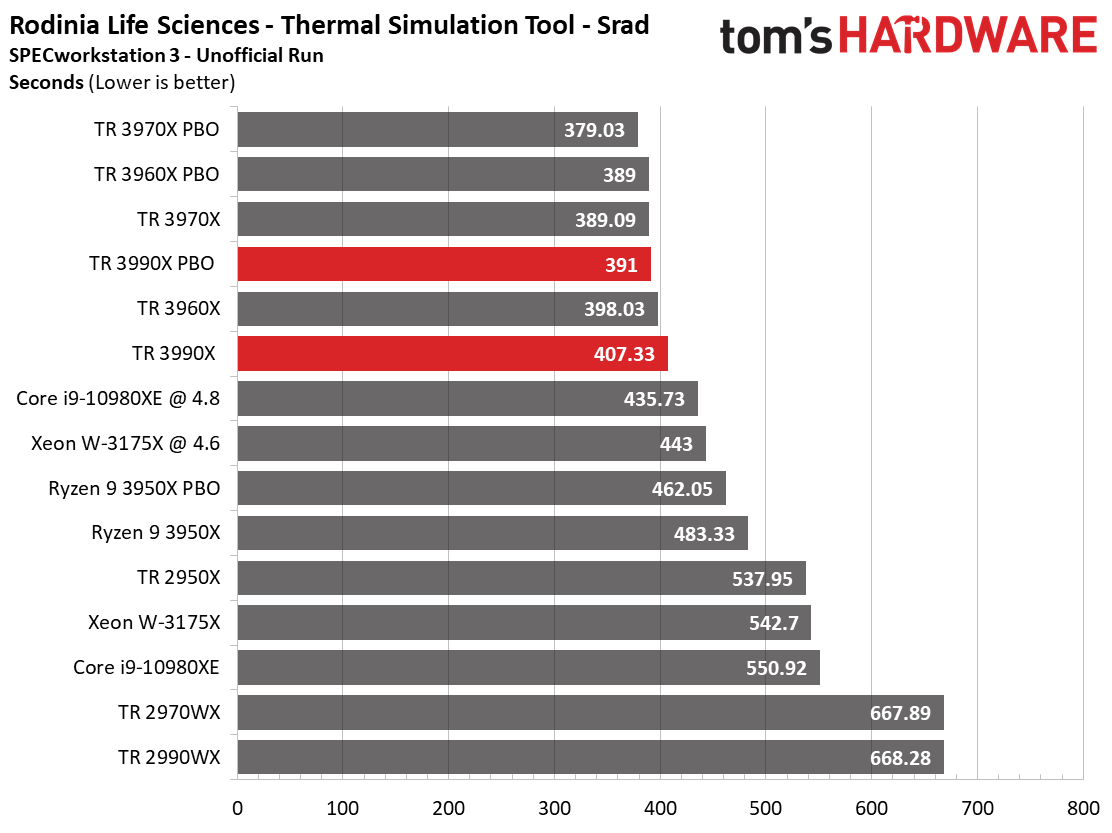
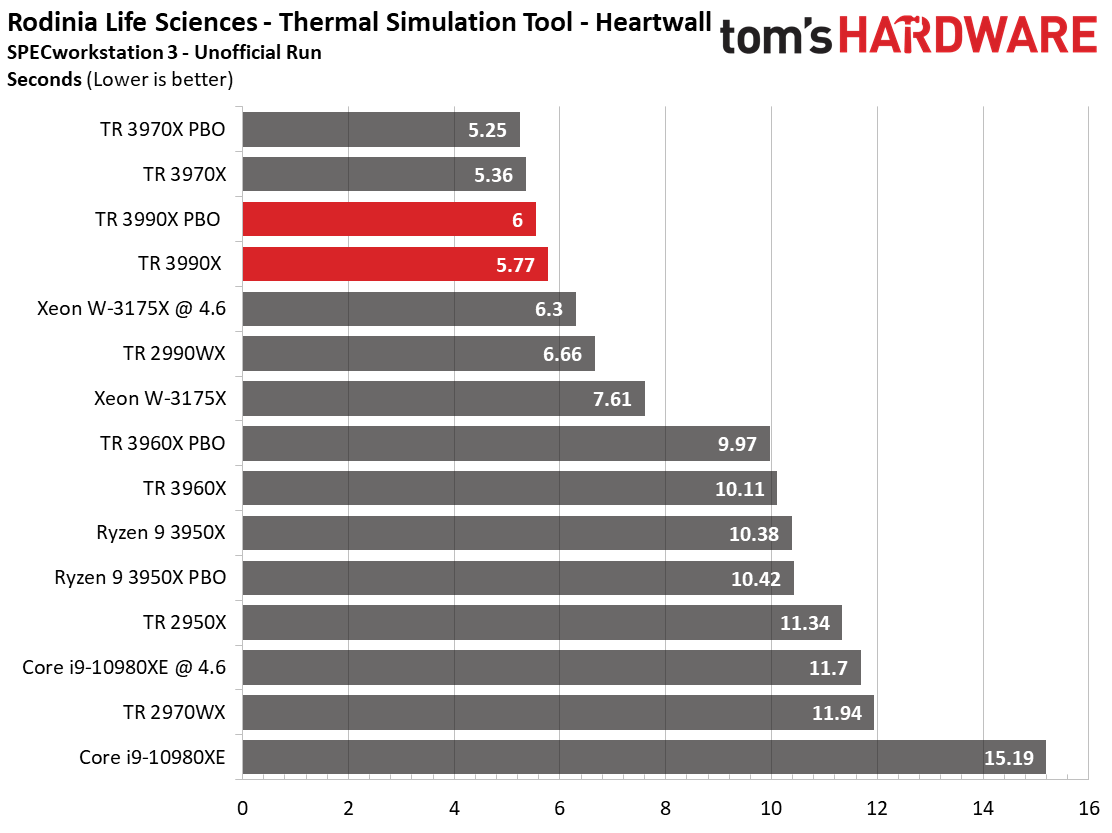
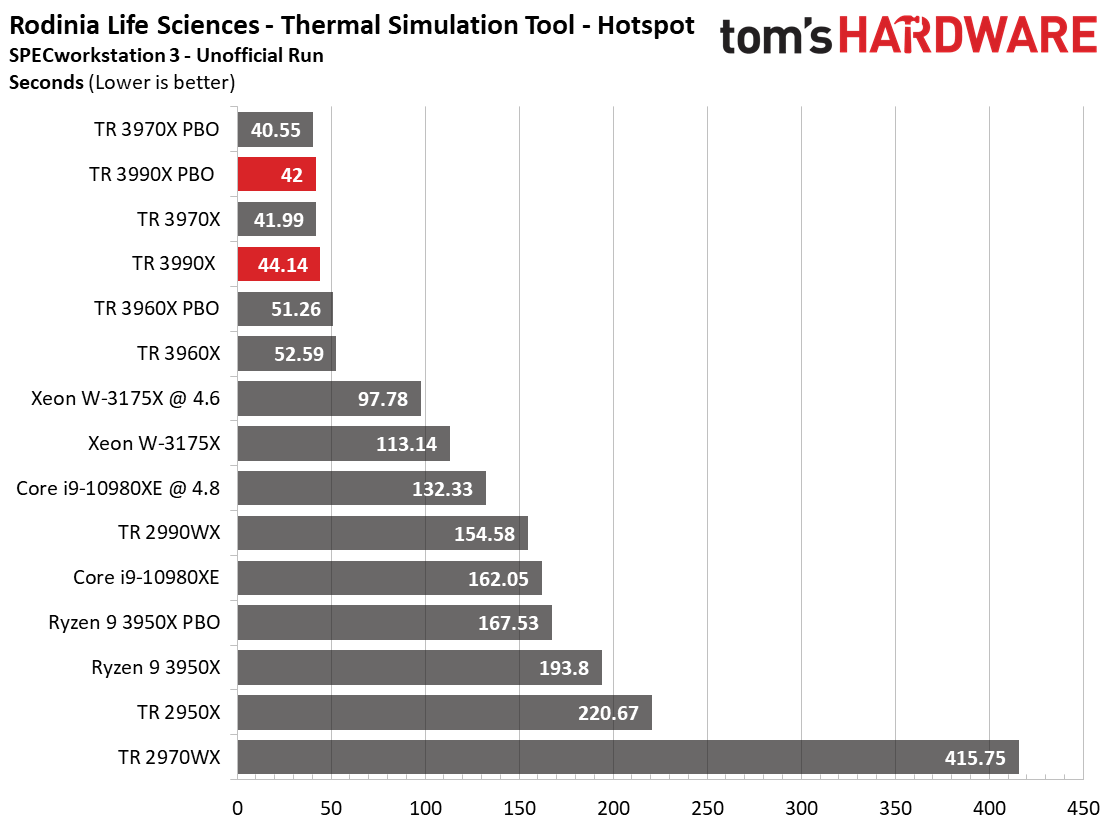
SPECworkstation 3's Rodinia LifeSciences benchmark steps through four tests that include medical imaging, particle movements in a 3D space, a thermal simulation, and image-enhancing programs. The 32-core 3970X outperforms the 3990X throughout this suite of tests, but we found that the workloads don't execute across both processor groups. That means the workload executes on 64 threads for both processors, giving the 3970X's higher clock speeds the upper hand.
We usually include the NAMD benchmark in both our regular suite and in the SPECWorkstation 3 lineup, but we encountered unexplained errors with the 3990X in both suites. We're working to troubleshoot the problem.
Financial and General Workloads
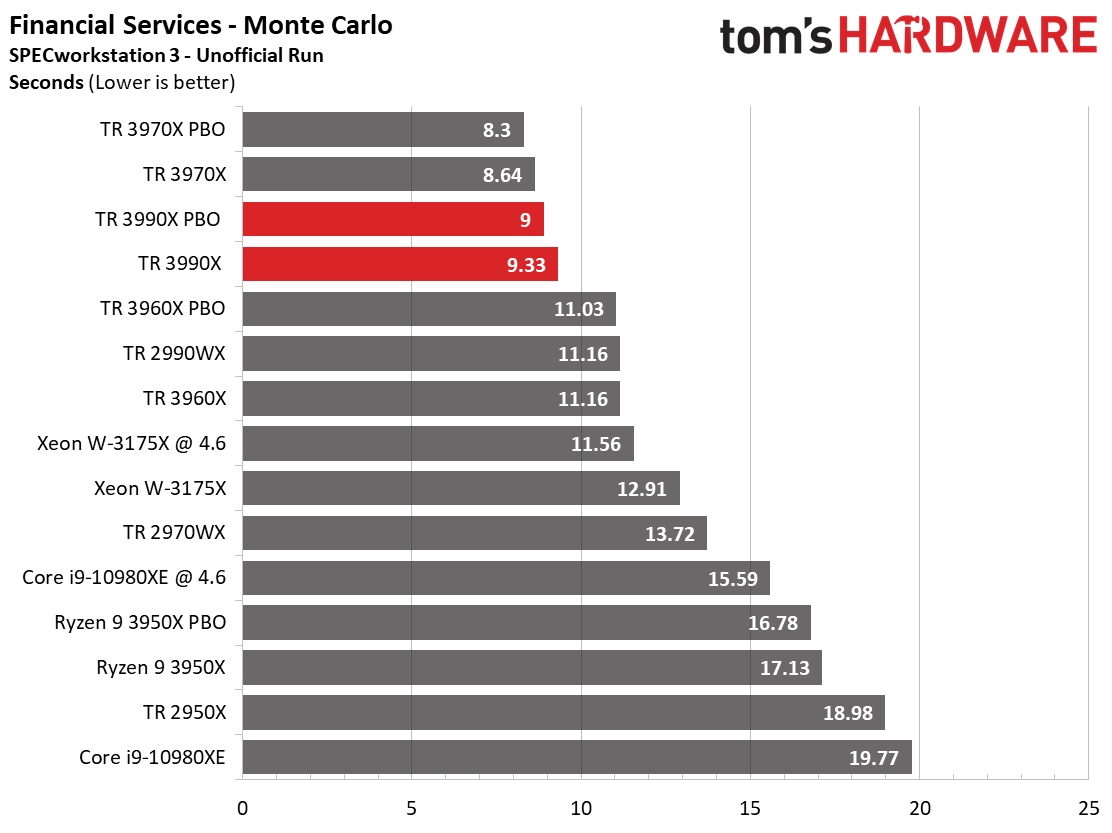
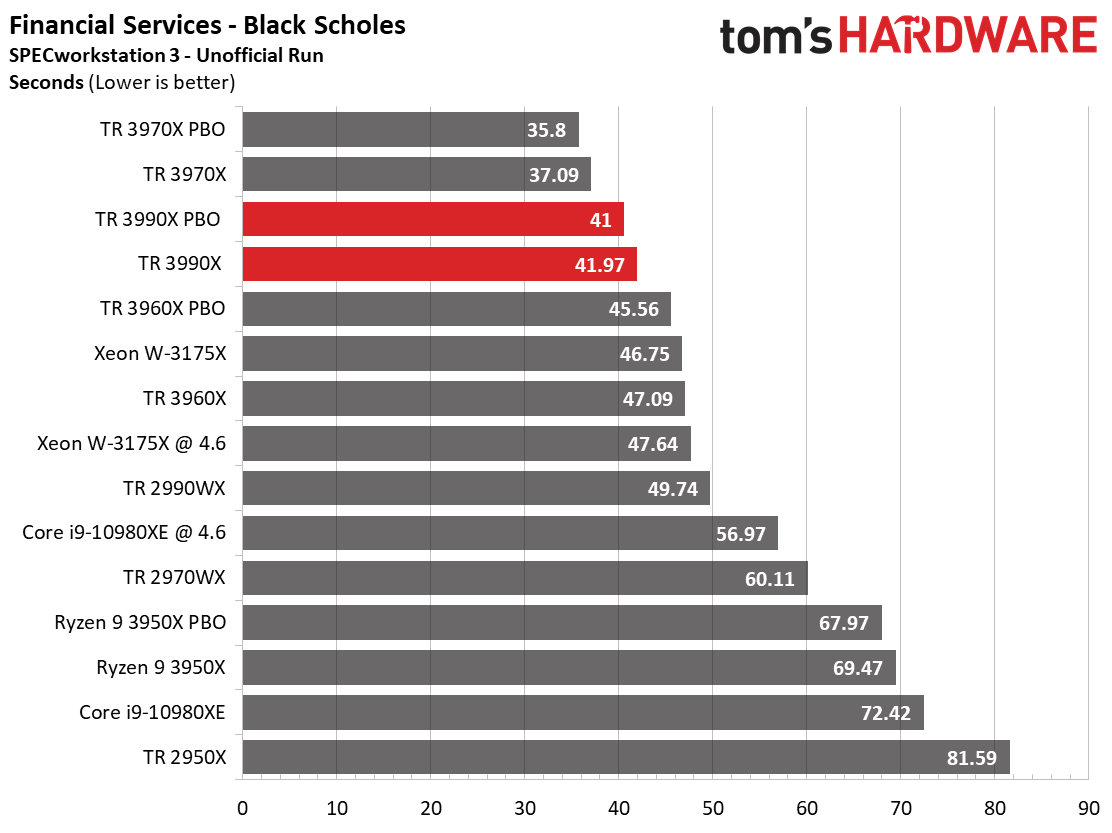
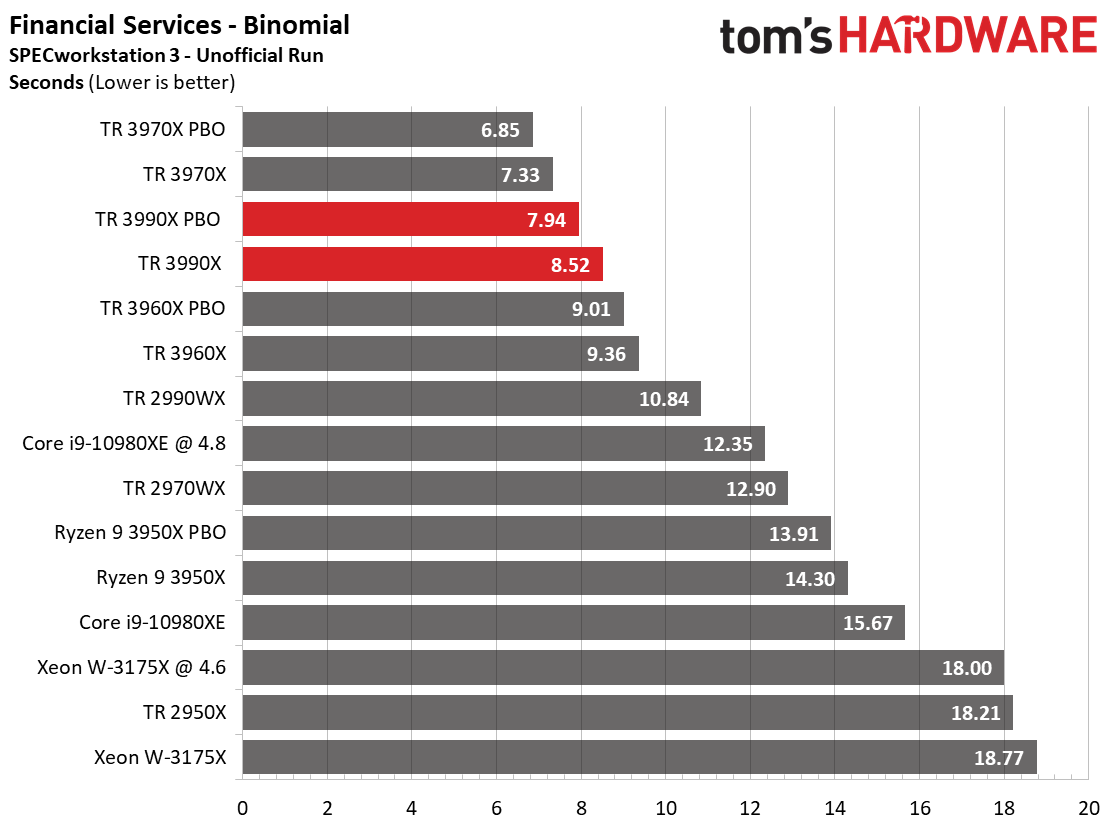
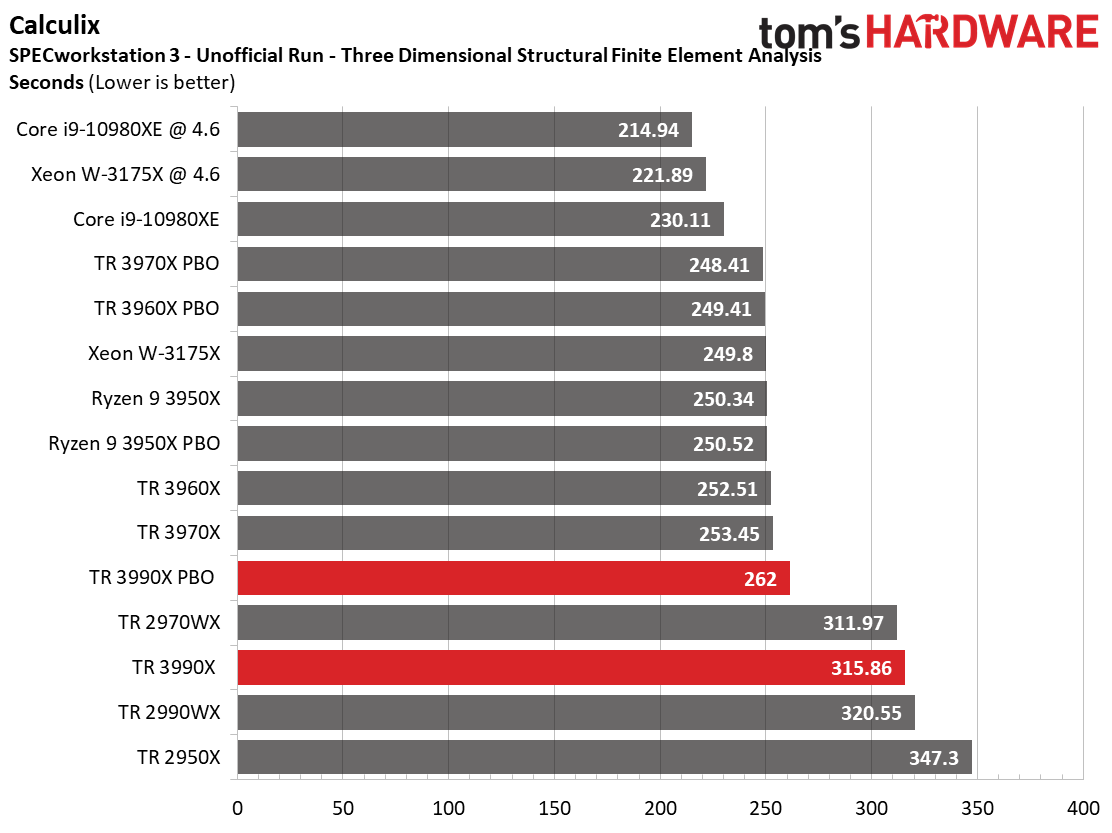
The Monte Carlo simulation is used to project risk and uncertainty in financial forecasting models. Again, we found that these SPECWorkstation 3 tests don't scale across processor groups.
These benchmarks are used by many organizations to quantify performance during competitive bake-offs, so the suite is badly in need of an update to support the 3990X's thread count.
MORE: Best CPUs
MORE: Intel & AMD Processor Hierarchy
MORE: All CPUs Content
Current page: Threadripper 3990X SPEC Workstation and Adobe Performance
Prev Page Threadripper 3990X Gaming Next Page Conclusion
Paul Alcorn is the Editor-in-Chief for Tom's Hardware US. He also writes news and reviews on CPUs, storage, and enterprise hardware.
-
mohammed2006 Threadripper 3990X performance gape is not enough to justify it over 3970x. which i think is the one to buy.Reply -
knekker ReplyA large number of applications don't scale well with NUMA architectures, particularly with Windows, which is the operating system of choice for visual effects artists.
I work in the VFX industry, where I've been at ILM, DNEG, MPC and Cinesite that work on most of the block buster movies, and I can tell you this. Windows is definitely not the OS of choice, that would be linux.
I do however currently work at a smaller vfx studio, and they use Windows. -
Roland Of Gilead Really enjoyed that one! Great comparison of the HEDT CPU's v Server and Mainstream, the good, the bad, and the ugly!Reply
Although, I don't get the almost apologetic tone in the Gaming Test notes. Yes, we know these CPU's aren't meant for gaming, but HEDT users, I'm sure, like to down tools too and game after a hard days slog! I suspect they'd like to know, along with the majority of the community, and anyone who'd be genuinely interested in these CPU's in the first place, what kind of gaming performance they can expect (and it's pretty damn good, by all accounts! ) from them.
Anyway, including the gaming metrics is just being comprehensive. That's why I come to Tom's. Comprehensive is good. Don't resist the urge to include these benches in future comparison's. Don't mind the detractors! :D -
domih So you could run a Cassandra 21-node cluster on one PC with 21 Virtual Machines each allocated with 6 threads, keeping 2 threads for the host. With a mobo max memory of 256GB, each VM could be allocated 11GB leaving 25GB for the host. AMD enables you to have fun 🆒Reply -
Phaaze88 Reply
Would your line of work actually enjoy using the 3990X, or would it just stick with something Intel again, due to the time and money lost swapping platforms?knekker said:I work in the VFX industry, where I've been at ILM, DNEG, MPC and Cinesite that work on most of the block buster movies, and I can tell you this. Windows is definitely not the OS of choice, that would be linux.
I do however currently work at a smaller vfx studio, and they use Windows. -
bamboe Well here they did a linux test if you like itReply
https://www.phoronix.com/scan.php?page=article&item=3990x-threadripper-linux&num=1 -
rjacko01 I have also worked Framestore, ILM, MPC etc & the idea of running windows for vfx on that scale is seriously scary. I think it's fair to say 95%+ of vfx are linux, cause only a few smaller houses run windows, often with horrendous results.Reply -
derekullo Hypothetically with 256 megabytes of L3 you could also have a 128 thread monero miner.Reply
My extrapolation from the 3970X (28900 hashes/second x 2) = 57800 hashes/second x 0.9 (due to scaling not being completely linear due to lower clock speeds) = 52020 hashes per second
Putting that into a monero calculator with a 300 watt power drain for the system and 0.06 Cost per KWh we get $1,364 profit a year.
$3990 / $1364 = 2.9 years to recoup your investment.
https://www.cryptocompare.com/mining/calculator/xmr?HashingPower=52020&HashingUnit=H/s&PowerConsumption=300&CostPerkWh=0.06&MiningPoolFee=1
Comparing this to a Geforce 2080Ti we get a strangely similar 2.89 years to recoup its investment.
$1300 / $1.23 a day = 1057 days / 365 days = 2.89 years
With the 3950x clocking higher and being 35% cheaper per core it would make more sense to use 3 - 3950x in 3 separate rigs than a 3990x.